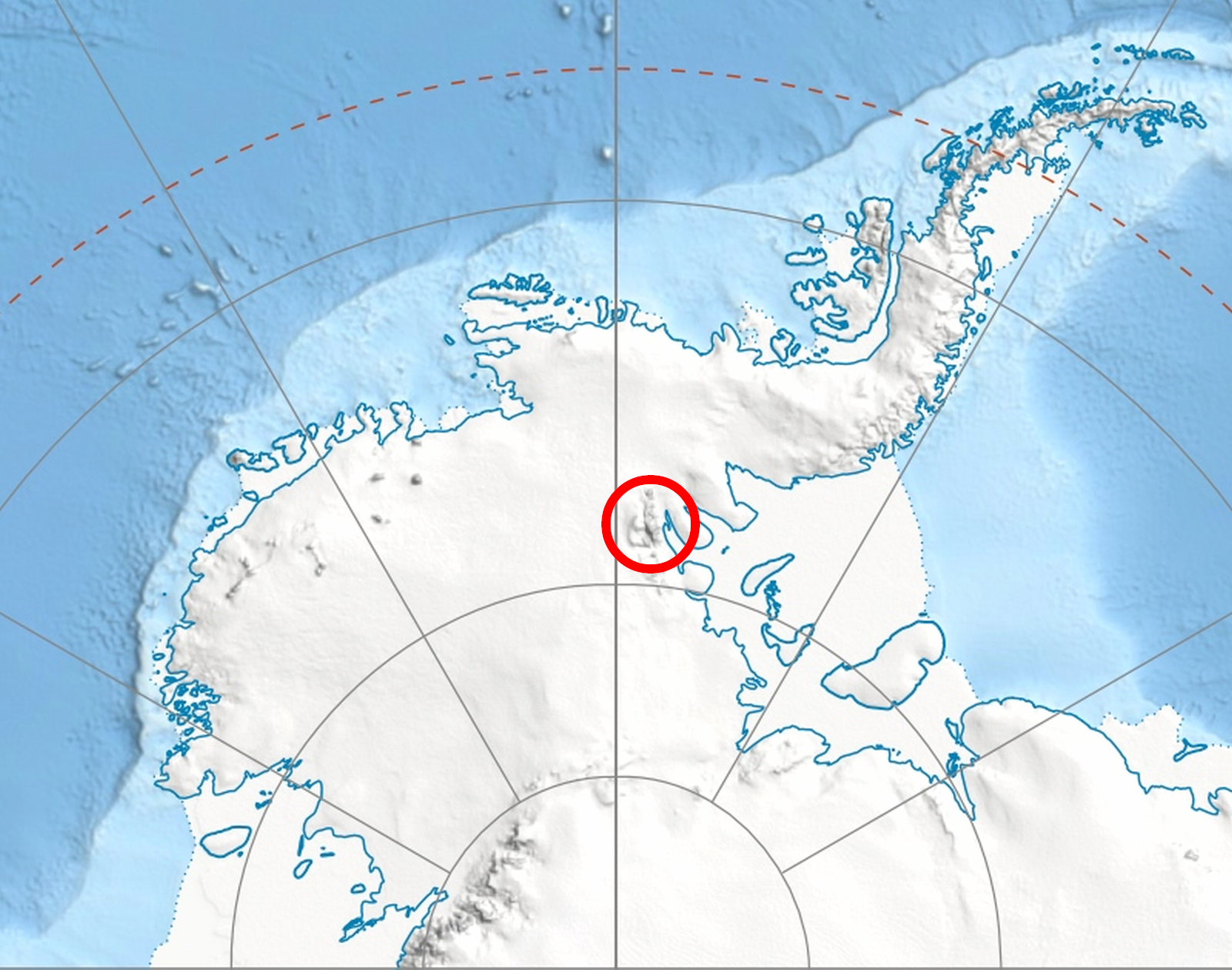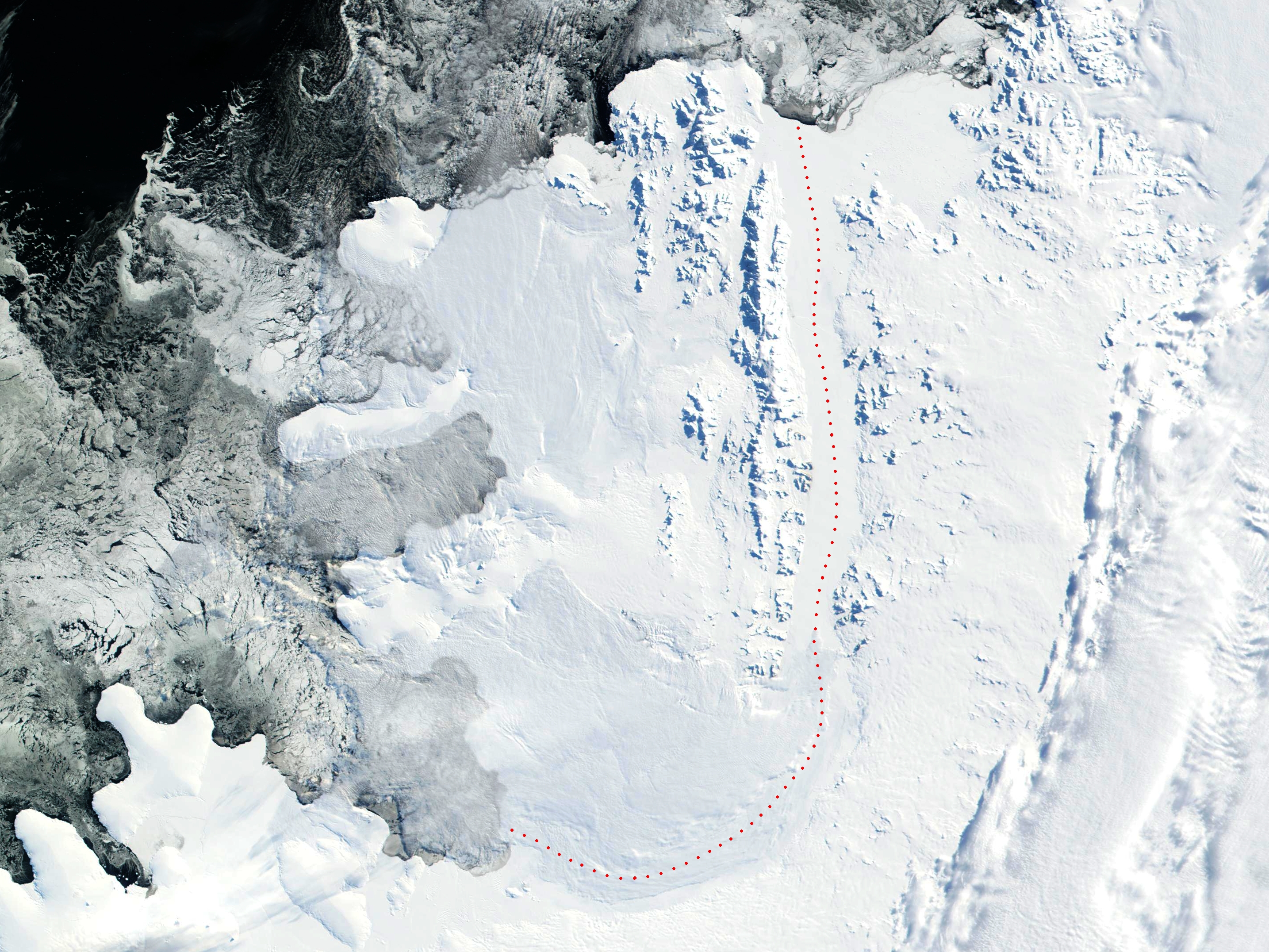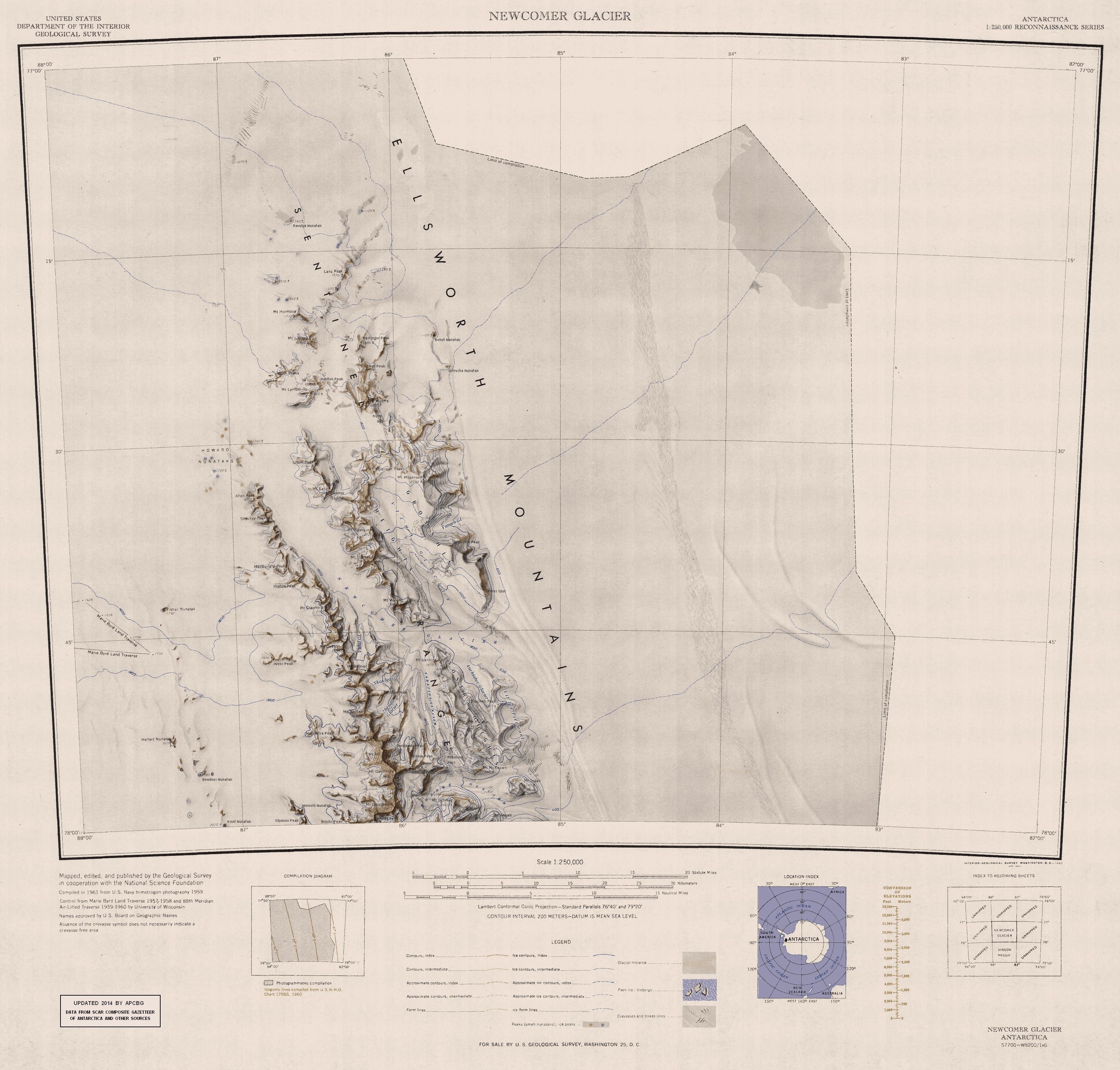|
Nell Peak
Nell Peak ( bg, връх Нел, vrah Nel, ) is the partly ice-free peak rising to 1432 mReference Elevation Model of Antarctica. Polar Geospatial Center. University of Minnesota, 2019 near the north end of Sentinel Range in Ellsworth Mountains, Antarctica. It is named after the British geologist Philip Nell, a member of the joint -Bulgarian field party on [...More Info...] [...Related Items...] OR: [Wikipedia] [Google] [Baidu] |
Sentinel Range
The Sentinel Range is a major mountain range situated northward of Minnesota Glacier and forming the northern half of the Ellsworth Mountains in Antarctica. The range trends NNW-SSE for about and is 24 to 48 km (15 to 30 mi) wide. Many peaks rise over and Vinson Massif (4892 m) in the southern part of the range is the highest elevation on the continent.Sentinel Range. SCAR Composite Antarctic Gazetteer. Sentinel Range comprises a main ridge (featuring Vinson Massif in its southern portion) and a number of distinct heights, ridges and mountains on its east side, including (south to north) , [...More Info...] [...Related Items...] OR: [Wikipedia] [Google] [Baidu] |
Ellsworth Mountains
The Ellsworth Mountains are the highest mountain ranges in Antarctica, forming a long and wide chain of mountains in a north to south configuration on the western margin of the Ronne Ice Shelf in Marie Byrd Land. They are bisected by Minnesota Glacier to form the Sentinel Range to the north and the Heritage Range to the south. The former is by far the higher and more spectacular with Mount Vinson () constituting the highest point on the continent.Bockheim, J.G., Schaefer, C.E., 2015. ''Soils of Ellsworth Land, the Ellsworth Mountains''. In: Bockheim, J.G. (Ed.), ''The Soils of Antarctica. World Soils Book Series'', Springer, Switzerland, pp. 169–181. The mountains are located within the Chilean Antarctic territorial claim but outside of the Argentinian and British ones. Discovery The mountains were discovered on November 23, 1935, by Lincoln Ellsworth in the course of a trans-Antarctic flight from Dundee Island to the Ross Ice Shelf. He gave them the descriptive name Sentinel ... [...More Info...] [...Related Items...] OR: [Wikipedia] [Google] [Baidu] |
Antarctica
Antarctica () is Earth's southernmost and least-populated continent. Situated almost entirely south of the Antarctic Circle and surrounded by the Southern Ocean, it contains the geographic South Pole. Antarctica is the fifth-largest continent, being about 40% larger than Europe, and has an area of . Most of Antarctica is covered by the Antarctic ice sheet, with an average thickness of . Antarctica is, on average, the coldest, driest, and windiest of the continents, and it has the highest average elevation. It is mainly a polar desert, with annual precipitation of over along the coast and far less inland. About 70% of the world's freshwater reserves are frozen in Antarctica, which, if melted, would raise global sea levels by almost . Antarctica holds the record for the lowest measured temperature on Earth, . The coastal regions can reach temperatures over in summer. Native species of animals include mites, nematodes, penguins, seals and tardigrades. Where vegetation o ... [...More Info...] [...Related Items...] OR: [Wikipedia] [Google] [Baidu] |
British Antarctic Survey
The British Antarctic Survey (BAS) is the United Kingdom's national polar research institute. It has a dual purpose, to conduct polar science, enabling better understanding of global issues, and to provide an active presence in the Antarctic on behalf of the UK. It is part of the Natural Environment Research Council (NERC). With over 400 staff, BAS takes an active role in Antarctic affairs, operating five research stations, one ship and five aircraft in both polar regions, as well as addressing key global and regional issues. This involves joint research projects with over 40 UK universities and more than 120 national and international collaborations. Having taken shape from activities during World War II, it was known as the Falkland Islands Dependencies Survey until 1962. History Operation Tabarin was a small British expedition in 1943 to establish permanently occupied bases in the Antarctic. It was a joint undertaking by the Admiralty and the Colonial Office. At the end of t ... [...More Info...] [...Related Items...] OR: [Wikipedia] [Google] [Baidu] |
Alexander Island
Alexander Island, which is also known as Alexander I Island, Alexander I Land, Alexander Land, Alexander I Archipelago, and Zemlja Alexandra I, is the largest island of Antarctica. It lies in the Bellingshausen Sea west of Palmer Land, Antarctic Peninsula from which it is separated by Marguerite Bay and George VI Sound. The George VI Ice Shelf entirely fills George VI Sound and connects Alexander Island to Palmer Land. The island partly surrounds Wilkins Sound, which lies to its west.Stewart, J. (2011) ''Antarctic An Encyclopedia'' McFarland & Company Inc, New York. 1776 pp. . Alexander Island is about long in a north–south direction, wide in the north, and wide in the south. Alexander Island is the second-largest uninhabited island in the world, after Devon Island. History Alexander Island was discovered on January 28, 1821, by a Russian expedition under Fabian Gottlieb von Bellingshausen, who named it Alexander I Land for the reigning Tsar Alexander I of Russia. Wha ... [...More Info...] [...Related Items...] OR: [Wikipedia] [Google] [Baidu] |
Mount Weems
Mount Weems () is a prominent mountain, 2,210 m, located 8 nautical miles (15 km) north of Mount Ulmer near the north end of the Sentinel Range in the Ellsworth Mountains. It is connected to Gromshin Heights to the south by Kipra Gap. The mountain was discovered by Lincoln Ellsworth on his trans-Antarctic flight of November 23, 1935. It was named by the Advisory Committee on Antarctic Names The Advisory Committee on Antarctic Names (ACAN or US-ACAN) is an advisory committee of the United States Board on Geographic Names responsible for recommending commemorative names for features in Antarctica. History The committee was established ... (US-ACAN) for Captain P. V. H. Weems, a retired inventor from the U.S. Navy and a developer of air navigation instrumentation and techniques and consultant to Ellsworth on air navigation problems of this flight. Ellsworth Mountains Mountains of Ellsworth Land {{EllsworthLand-geo-stub ... [...More Info...] [...Related Items...] OR: [Wikipedia] [Google] [Baidu] |
Mount Lymburner
Mount Lymburner () is a mountain, high, standing west-northwest of Mount Weems near the north end of the Sentinel Range in the Ellsworth Mountains of Antarctica. It was discovered by Lincoln Ellsworth on his trans-Antarctic flight of November 23, 1935, and was named by the Advisory Committee on Antarctic Names for J.H. Lymburner, an assistant pilot on Ellsworth's expedition. See also * Mountains in Antarctica This is a list of all the Ultra prominent peaks (with topographic prominence greater than 1,500 metres) in Antarctica. Some islands in the South Atlantic have also been included and can be found at the end of the list. Antarctica South Atl ... References Ellsworth Mountains Mountains of Ellsworth Land {{EllsworthLand-geo-stub ... [...More Info...] [...Related Items...] OR: [Wikipedia] [Google] [Baidu] |
Mount Liavaag
Mount Liavaag () is a mountain, high, between Mount Holmboe and the Holth Peaks near the northern end of the Sentinel Range in the Ellsworth Mountains of Antarctica. It was discovered by Lincoln Ellsworth on his trans-Antarctic flight of November 23, 1935, and was named by the Advisory Committee on Antarctic Names for First Mate Liavaag of the ''HMAS Wyatt Earp, Wyatt Earp'' in 1935–36, and also a member of Ellsworth's two earlier Antarctic expeditions. See also * Mountains in Antarctica References Ellsworth Mountains Mountains of Ellsworth Land {{EllsworthLand-geo-stub ... [...More Info...] [...Related Items...] OR: [Wikipedia] [Google] [Baidu] |
Lanz Peak
Lanz Peak () is a peak, high, near the extreme northern end of the Sentinel Range in the Ellsworth Mountains of Antarctica. It is north-northwest of Mount Weems and is the middle one of a group of three peaks lying in a northeast–southwest direction. The peak was discovered by Lincoln Ellsworth on his trans-Antarctic flight of November 23, 1935, and was named by the Advisory Committee on Antarctic Names for Walter J. Lanz, a radio operator on three Ellsworth Antarctic expeditions between 1933 and 1936. See also * Mountains in Antarctica This is a list of all the Ultra prominent peaks (with topographic prominence greater than 1,500 metres) in Antarctica. Some islands in the South Atlantic have also been included and can be found at the end of the list. Antarctica South Atl ... References Ellsworth Mountains Mountains of Ellsworth Land {{EllsworthLand-geo-stub ... [...More Info...] [...Related Items...] OR: [Wikipedia] [Google] [Baidu] |
Mountains In Antarctica ...
This is a list of all the Ultra prominent peaks (with topographic prominence greater than 1,500 metres) in Antarctica. Some islands in the South Atlantic have also been included and can be found at the end of the list. Antarctica South Atlantic Sources * * * {{DEFAULTSORT:List Of Ultras Of Antarctica Antarctica Ultras * Ultras Ultras are a type of association football fans who are renowned for their fanatical support. The term originated in Italy, but is used worldwide to describe predominantly organised fans of association football teams. The behavioural tende ... [...More Info...] [...Related Items...] OR: [Wikipedia] [Google] [Baidu] |


.jpg)

